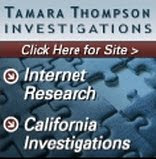This got me thinking about the case law related to the use of audio and video recording devices in various circumstances. Here's one. Add other statutes in the comments section.
In USA V. Flash (that's the appellant's name), the 2nd Circuit determined that the 4th Amendment rights of the appellant were not violated when a confidential informant surreptitiously videotaped him, which lead to the appellant's arrest. If you invite them in, the cameras can follow.
It is firmly established that audio recordings, obtained without a warrant and through hidden recording devices by an invited guest, do not violate the Fourth Amendment. See, e.g., United States v. White, 401 U.S. 745, 749, 753 (1971); Lopez v. United States, 373 U.S. 427, 438–40 (1963).
This site collects news stories on video voyurism. New Jersey apparently allows hidden videotaping of house guests. Workplace video recording has its own set of restrictions. Here's the Privacy and Security Law Report list on prospective videotaping legislation. This lawyer gives an expansive analysis of and citations to case law on workplace videotaping.
Today's New York Times (registration site) has an explorative piece on the common and innovative uses of webcams, and their unintended consequences. Through Google you can find thousands of amateur live video in people's homes.
The Yankee Group, a market research firm, estimates that as many as 13 percent of American households have a Webcam attached to one of their computers, often sitting on top of a monitor in a living room or a bedroom. Like each Web page, each camera on the Internet has an address, and unless the cameras have been concealed behind software firewalls, their addresses make them specifically searchable and identifiable. A Google search one day last week indicated more than 10,000 such Web cameras, showing everything from bedrooms and living rooms to coin-operated laundry businesses and shoe stores to plasma reactors and mountain ranges. (Some of the cameras required passwords for access to the video.)
Other video sources are mostly security cameras that have been fed onto the Net, either deliberately to make them available to the public, like traffic or weather cams, or simply because putting the camera online was the easiest way to get the video signal into the building's security office.




